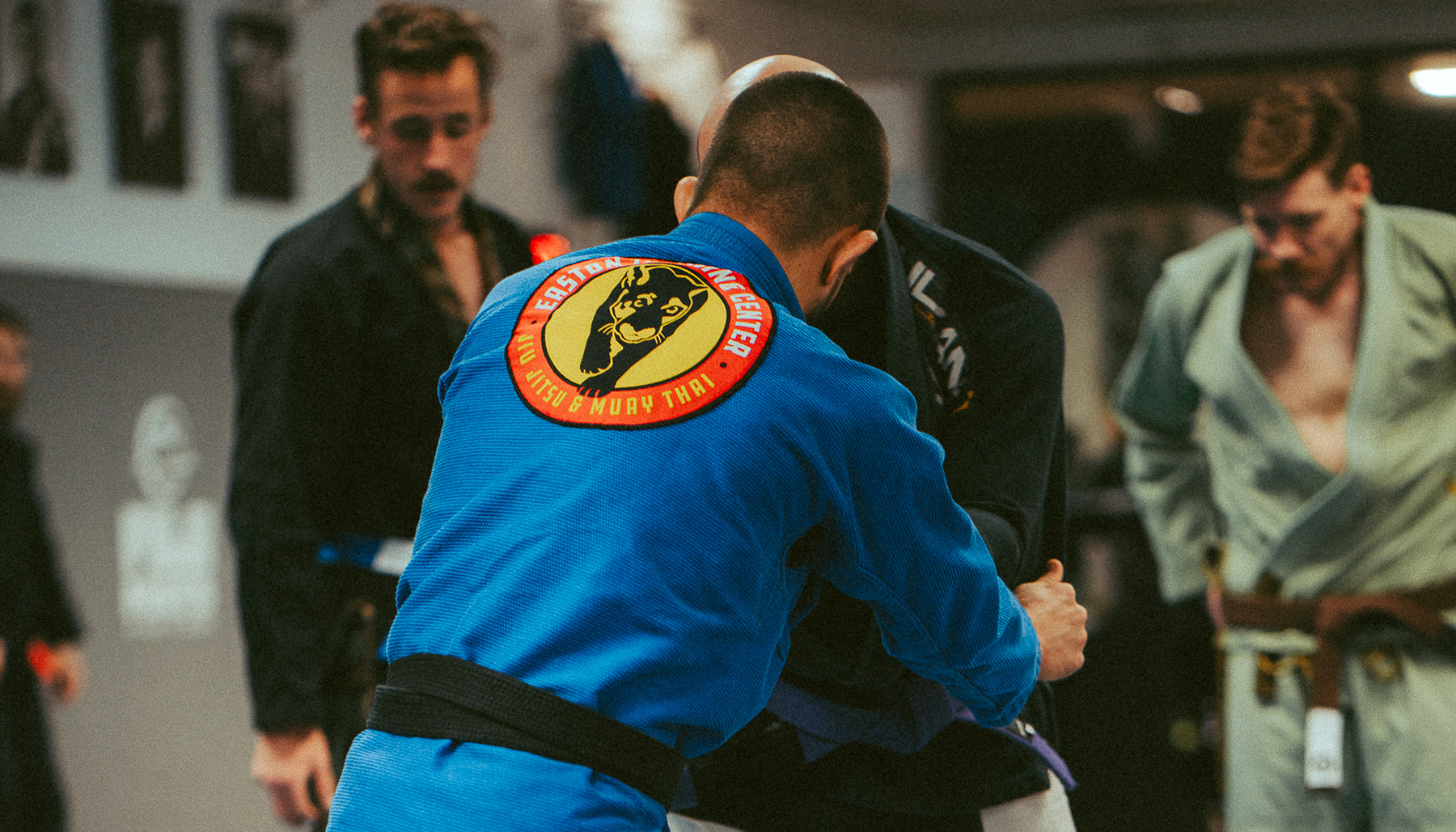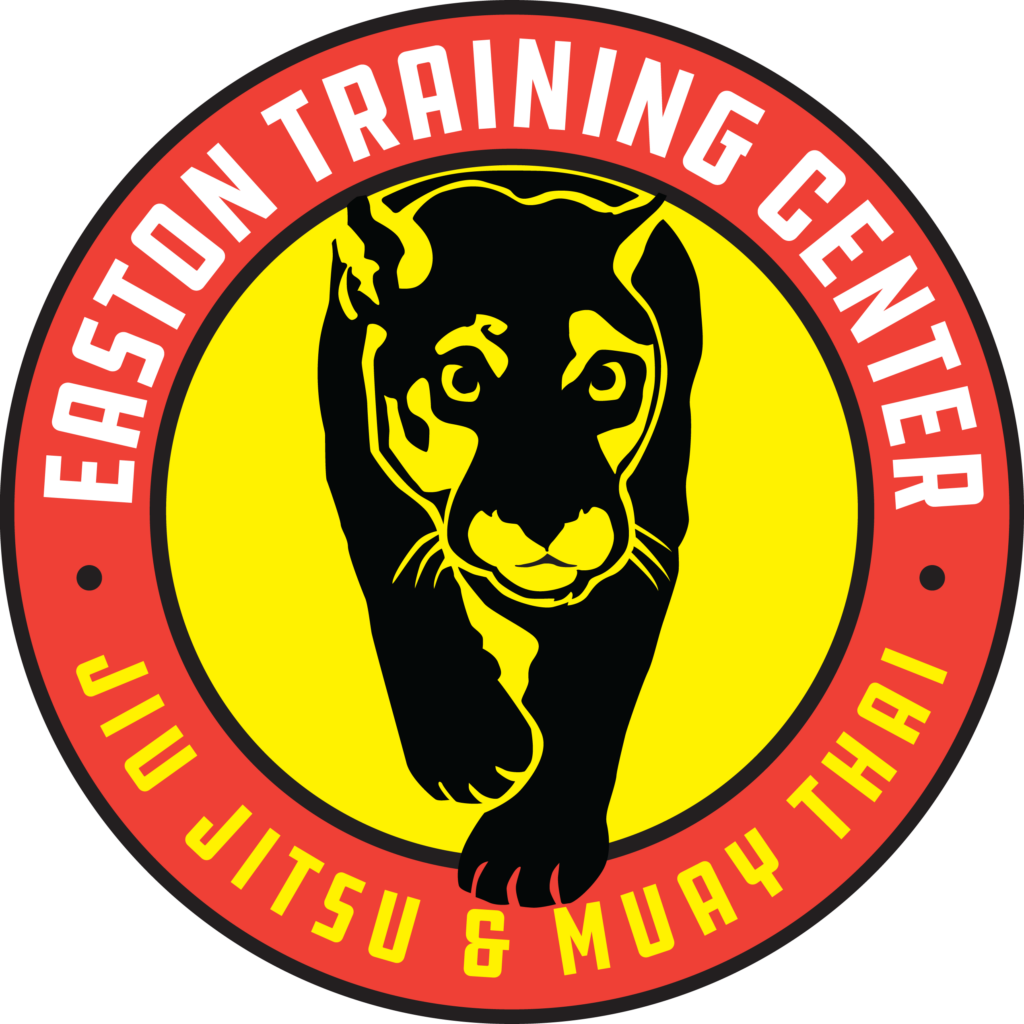Most of us try our best to avoid pain. We’ll lean in for a good, deep stretch, but if we tweak our neck or shoulder, tensing up and compensating with surrounding muscles makes a pretty normal response.
If you’ve ever dealt with neck pain after a BJJ roll, you know how it goes.
You feel a weird pop, and then can barely turn your head to the right. Simply ignoring the pain and hoping it goes away only makes things worse, but how can you incorporate healthy movement without agitating it further?

What can we learn through exploring our pain rather than simply trying to mitigate it?
We’re not suggesting pushing past a breaking point or ignoring your body. We simply suggest that with the proper guidance, leaning into a pain spot and confronting its source can optimize its healing, both emotionally and physically.
Reverse the position, reverse the symptom
While we don’t want to do anything that will create more pain, we also don’t want to avoid it altogether.

“One of the worst things you can do for an injury,” says Longmont coach Alex Glades, “aside from further injuring it, is overprotecting it.”
While some injuries will require you to avoid certain activities so they don’t become serious, things generally heal better when they can move through the available range of motion.
Coach Alex, a physical therapist specializing in orthopedics (the musculoskeletal system) and an Easton brown belt, typically encourages martial arts practitioners to continue their movement practices while seeking safe modifications. It also comes down to how much pain you’re willing to tolerate.
If someone has a crick in their neck, Alex would encourage them to move their neck every which way to the extent that they can; minor discomfort is ok.
With some things in physical therapy, like discs in the neck and back, movement in the opposite direction – away from the pain – is better than no movement. However, generally, the key to reversing a symptom lies in reversing its position.
In the case of the lower back, Alex tells us, a lot of lower back issues are fixed with repeated back-bending – regardless whether or not it’s easy. This also goes for symptoms of lower back issues, such as pain experienced coming from the lower back, through the glutes and into the foot.
 While your instinct may be to forward fold to alleviate some of that pressure off your back, if forward-bending or slouching caused the issue, this movement will only exacerbate the fibers of the inflamed disc.
While your instinct may be to forward fold to alleviate some of that pressure off your back, if forward-bending or slouching caused the issue, this movement will only exacerbate the fibers of the inflamed disc.
“It’s like if you wear a t-shirt and bend forward,” says Alex. “The back of the shirt lifts up and stretches out, but crunches in front. The same way, fibers of the discs on your backside will get over-stretched and damaged. If you continue to forward bend, it will hurt. Back-bending puts slack on the afflicted area and helps it.”
Similarly, that neck pain that manifests down the shoulder, through the arm and all the way into the hand, can also be reversed by reversing the positioning of your neck. If your neck hurts from slouching or hunching at your computer, you can work to reverse the pain by bending your neck backwards with a Neck Retraction & Extension.
[Stretching For Recovery, Performance, And Injury Prevention]
Choose the path that aggravates

Longmont Kids Department Head River Mayfield is also a firm believer in moving the afflicted areas and attacking it.
Along with coaching and running the Kids Department, River teaches adult BJJ No-Gi and works as a personal trainer with a focus on exercise recovery and rehabilitation.
“Generally when things are ignored, or go without being attended to – and you try to push the pain away – it gets worse and worse until eventually it prevents you from doing something you actually really want to do.”
When dealing with a mobility-limiting pain, River prioritizes stretching not only that area but stretching all the areas around it.
For the neck pain that might mean exploring all of the connective tissue building up to is: the right forearm, bicep and wrist, right shoulder and right side of chest, the right side of the upper back and rib cage.
“Really focus on stretching those and massage them out,” says River. “Find ways to move them and really discover what movement patterns aggravate and don’t aggravate.
And the ones that do aggravate – as long as it’s not excruciating pain – I’m a big believer in finding that line of discomfort is and working into it.”
Identify the point of pain, what it is and where it’s coming from, and continue to test those boundaries bit by bit.
Leaning into pain doesn’t have to look drastic. Do the stuff that’s a little difficult within reason, and don’t try to take it too far on the first attempt. Even if it’s 20 percent, then 25, keep working towards gaining mobility bit by bit, and try to maintain that through the day.

[Training Hard? 6 Ways To Recover]
Upper body awareness
One area of the body that active people may frequently experience pain for many reasons is the rotator cuff. Our shoulders and necks, along with bearing the brunt of most of our stress, frequently take the biggest beating too.
Rotator cuff tendon tears are prevalent in patients with shoulder pain, the third most common musculoskeletal complaint. Whether we’re training, sitting at a desk, cleaning or painting, we may not notice the compensation our neck and shoulders do for these sustained or repetitive movements.
Over longer spans of time, if we don’t stay mindful about taking breaks, we can end up stiff with pain and probably terrible at breathing.

A short anatomy lesson.
The rotator cuff keeps the humerus, our upper arm bone, in place. Rotator cuff overuse often leads to rotator cuff impingement – the pinching of one of the rotator cuff tendons, or other soft tissue, that runs through the space between the humerus, and the shoulder blade. (Yuck.)
One of these tendons, the supraspinatus, is a small muscle of the upper back that runs from the shoulder blade to the humerus. It helps to abduct the arm at the shoulder. Overuse can cause inflammation and tearing, known as a rotator cuff tear, and if it’s bad enough, the pain associated with a tear can extend from the shoulder all the way down to the elbows.
A bursa is a small sack of fluids that sits between the clavicle and the humerus that acts like a cushion, reducing the bone-on-bone impact. Impingement can also affect the bursa, causing inflammation and something called Bursitis.
Basically, there’s a lot of stuff going on up there that’s helping maintain the delicate balance of our mobility. So if you’re frequently experiencing shoulder pain, you’re not alone.
Check out these rotator cuff exercises and stretches to increase strength and flexibility and help prevent rotator cuff injury.
Many injuries and discomforts we incur in daily life are curable, but they’re easier to cure when they’re newer. If you’re experiencing chronic pain or discomfort, get it checked out.
While learning how to move through and into pain can help reverse some symptoms, the idea isn’t to “tough it out.” Moving through pain looks very different than ignoring it and powering through it – which will only dig a deeper hole for you to climb out of.
[Kick The Sugar, Optimize Your Training Fuel and Feel Better]






